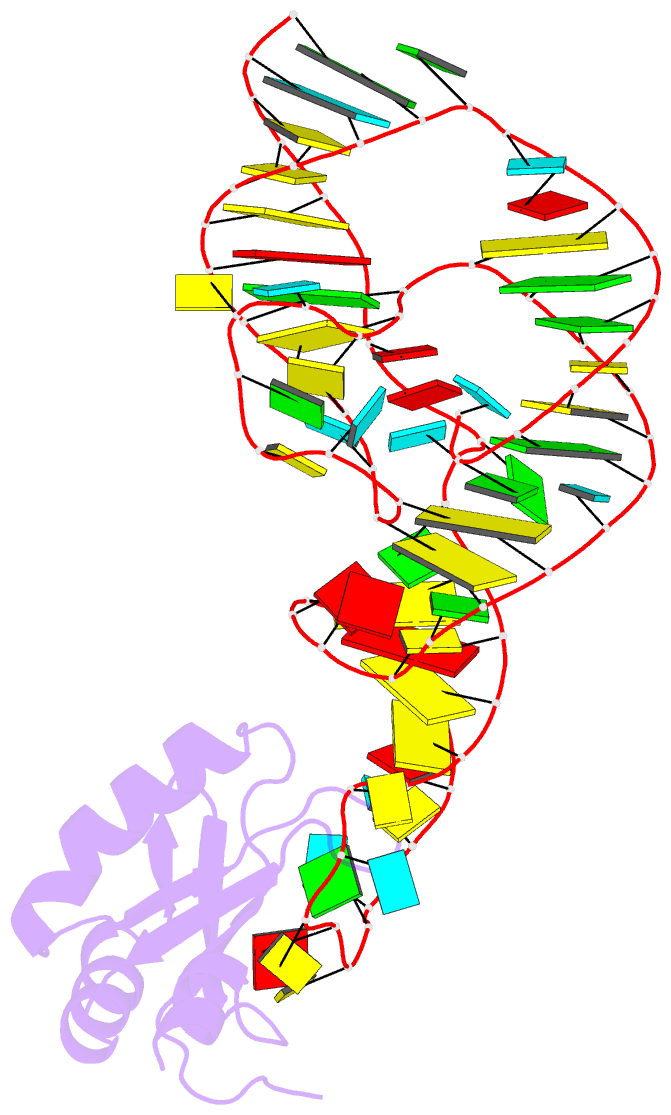Summary information and primary citation
- PDB-id
- 2oj3; SNAP-derived features in text and JSON formats;
DNAproDB
- Class
- structural protein-RNA
- Method
- X-ray (2.9 Å)
- Summary
- Hepatitis delta virus ribozyme precursor structure, with c75u mutation, bound to tl+ and cobalt hexammine (co(nh3)63+)
- Reference
- Ke A, Ding F, Batchelor JD, Doudna JA (2007): "Structural roles of monovalent cations in the HDV ribozyme." Structure, 15, 281-287. doi: 10.1016/j.str.2007.01.017.
- Abstract
- The hepatitis delta virus (HDV) ribozyme catalyzes viral RNA self-cleavage through general acid-base chemistry in which an active-site cytidine and at least one metal ion are involved. Monovalent metal ions support slow catalysis and were proposed to substitute for structural, but not catalytic, divalent metal ions in the RNA. To investigate the role of monovalent cations in ribozyme structure and function, we determined the crystal structure of the precursor HDV ribozyme in the presence of thallium ions (Tl(+)). Two Tl(+) ions can occupy a previously observed divalent metal ion hexahydrate-binding site located near the scissile phosphate, but are easily competed away by cobalt hexammine, a magnesium hexahydrate mimic and potent reaction inhibitor. Intriguingly, a third Tl(+) ion forms direct inner-sphere contacts with the ribose 2'-OH nucleophile and the pro-S(p) scissile phosphate oxygen. We discuss possible structural and catalytic implications of monovalent cation binding for the HDV ribozyme mechanism.





